Table of Contents
Introduction to Sesame Seeds
Sesame seeds are one of the oldest and most versatile seeds used in kitchens worldwide. These tiny, nutty seeds come in two main varieties: black and white. While they may look similar at first glance, their flavor, texture, and culinary applications differ significantly. Whether you're a seasoned chef or a curious home cook, understanding these differences can elevate your cooking.
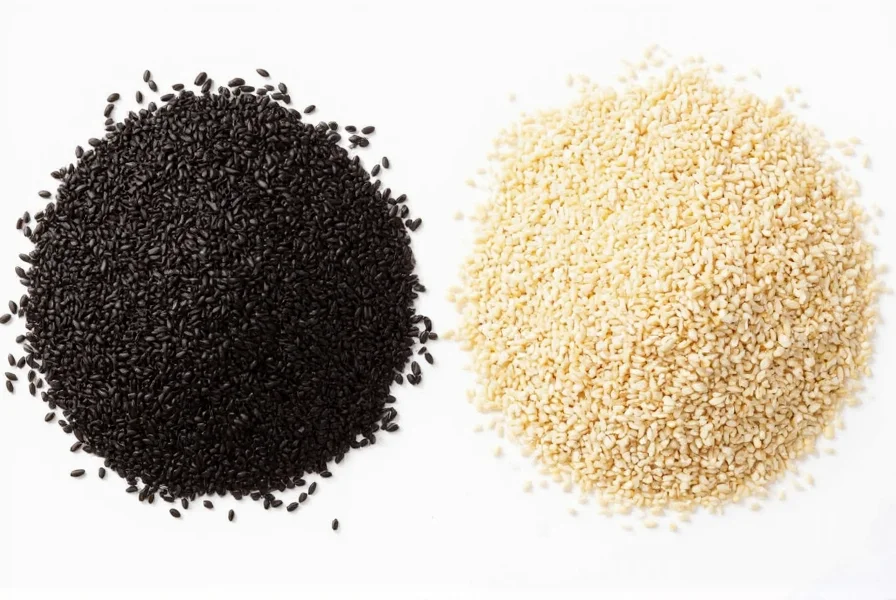
Both varieties originate from the same plant, Sesamum indicum, but their color and characteristics depend on hull processing. In this article, we'll explore their origins, flavor profiles, and practical applications to help you make informed choices in the kitchen.
Black vs. White Sesame Seeds: Key Differences
The primary difference between black and white sesame seeds lies in hull processing, not harvesting time. Here's what sets them apart:
- Hull Status: Black sesame seeds retain their outer hull, giving them a dark color and richer flavor. White sesame seeds have the hull removed during processing, resulting in a lighter appearance and milder taste.
- Flavor: Black sesame has a deeper, earthier, and slightly bitter profile, while white sesame offers a milder, sweeter nuttiness.
- Texture: When toasted, black sesame develops a crunchier texture, whereas white sesame remains softer and more delicate.
- Nutritional Profile: Black sesame contains higher levels of antioxidants and calcium due to its intact hull, but white sesame provides more bioavailable calcium since the hull is removed.
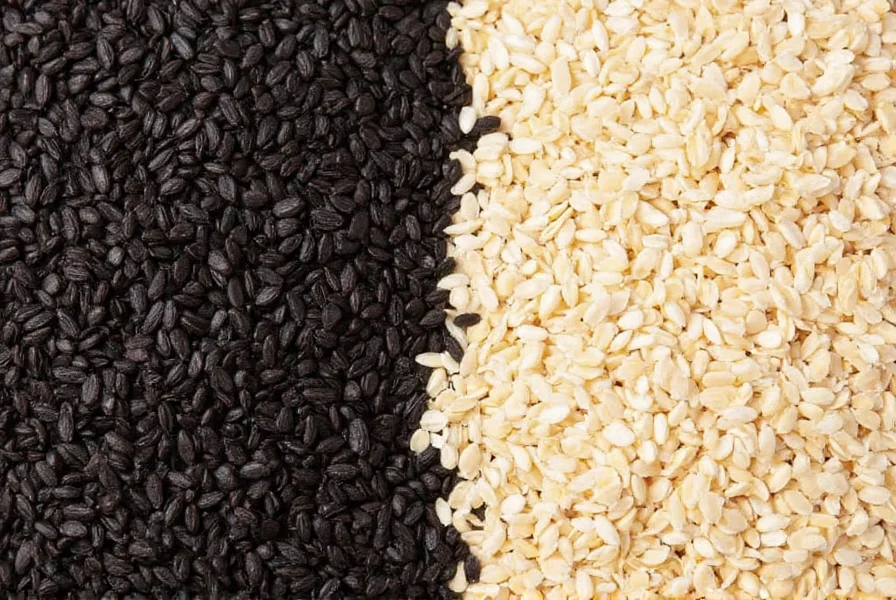
Both varieties are nutrient-dense, providing healthy fats, protein, and minerals like iron and magnesium. Their distinct characteristics make them suitable for different culinary applications.
Flavor Profiles and Culinary Uses
Understanding each variety's flavor profile helps maximize their potential in cooking:
Black Sesame Seeds
Black sesame seeds deliver a robust, earthy flavor that enhances savory dishes and traditional recipes:
- Asian cuisine: Essential in Chinese, Japanese, and Korean cooking. Used in sesame noodles, black sesame paste, and desserts like mochi and kakigori.
- Glazes and sauces: Toasted black sesame adds depth to meat glazes and dipping sauces.
- Baking: Imparts a nutty richness to cookies, breads, and pastries. Black sesame powder creates a chocolate-like flavor in vegan desserts.
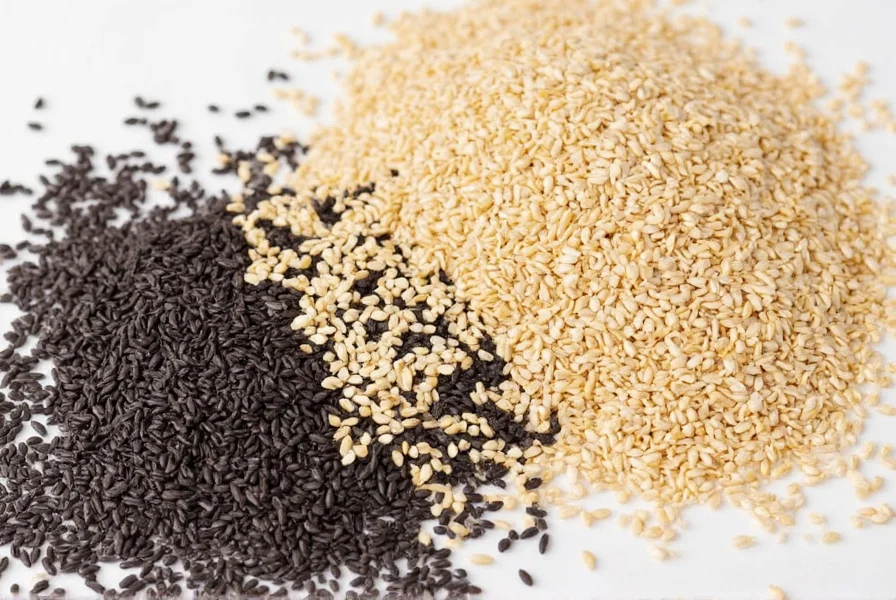
White Sesame Seeds
White sesame seeds offer a delicate sweetness ideal for desserts and light dishes:
- Desserts: Perfect for tangyuan (sweet sesame balls), halva, cakes, and cookies where subtle nuttiness is desired.
- Salads and dressings: Sprinkle over salads or incorporate into vinaigrettes for a mild crunch.
- Snacks: Common in trail mixes, energy bars, and seaweed snacks for balanced flavor.
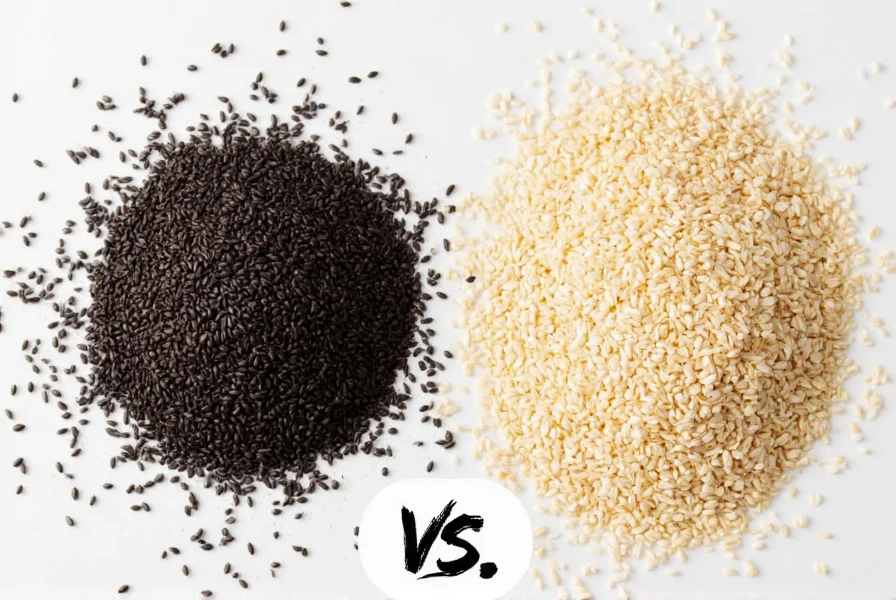
Whether you prefer the bold, earthy notes of black sesame or the gentle sweetness of white sesame, both offer unique flavors that can transform your dishes into something truly special.
Practical Tips for Using Sesame Seeds
Maximize flavor and freshness with these expert tips:
- Toasting: Toast in a dry pan over medium heat until golden (1-3 minutes). Shake frequently to prevent burning. Toasting enhances nuttiness for both varieties.
- Storage: Keep in an airtight container in a cool, dark place. White sesame lasts 3-6 months at room temperature; black sesame (higher oil content) lasts 2-4 months. Refrigerate or freeze for extended freshness (up to 1 year).
- Grinding: For paste, use a mortar and pestle for coarse texture or a food processor for smooth tahini. Soak seeds in water for 30 minutes before blending for creamier results.
- Pairing: Complements soy sauce, rice vinegar, ginger, and garlic. Balances spicy dishes with its nutty richness.
- Quantity: Start with 1-2 teaspoons per dish. Their strong flavor can overpower if overused.
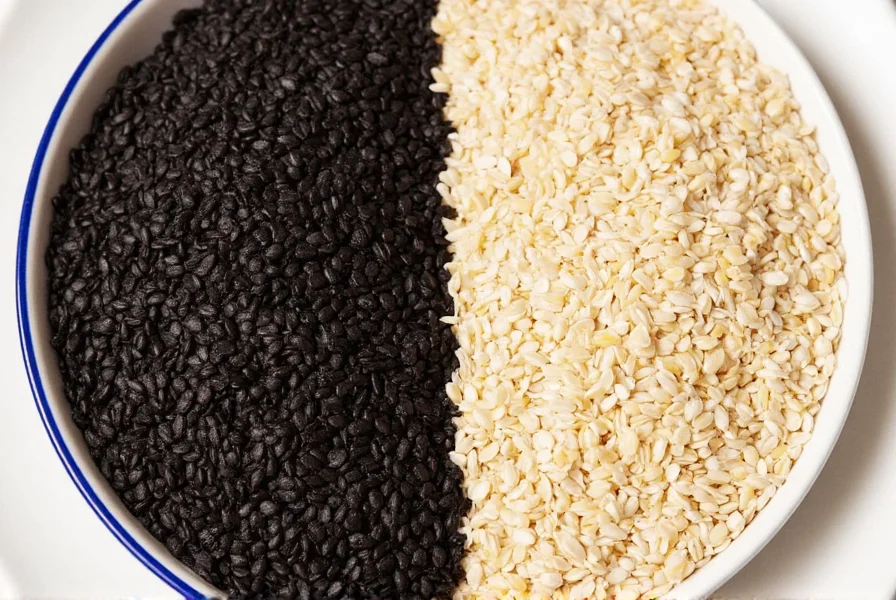
Combine both varieties in recipes for contrasting textures and flavors—black sesame for depth, white sesame for sweetness.
Buying Guide: How to Choose the Right Sesame Seeds
| Feature | Description |
|---|---|
| Color | Black sesame should be deep, glossy, and uniform. White sesame must be pale, creamy, and consistent. |
| Smell | Fresh seeds have a mild, nutty aroma. Avoid rancid or oily smells, which indicate spoilage. |
| Texture | Seeds should be dry and free from clumping. Sticky or moist seeds are likely old or improperly stored. |
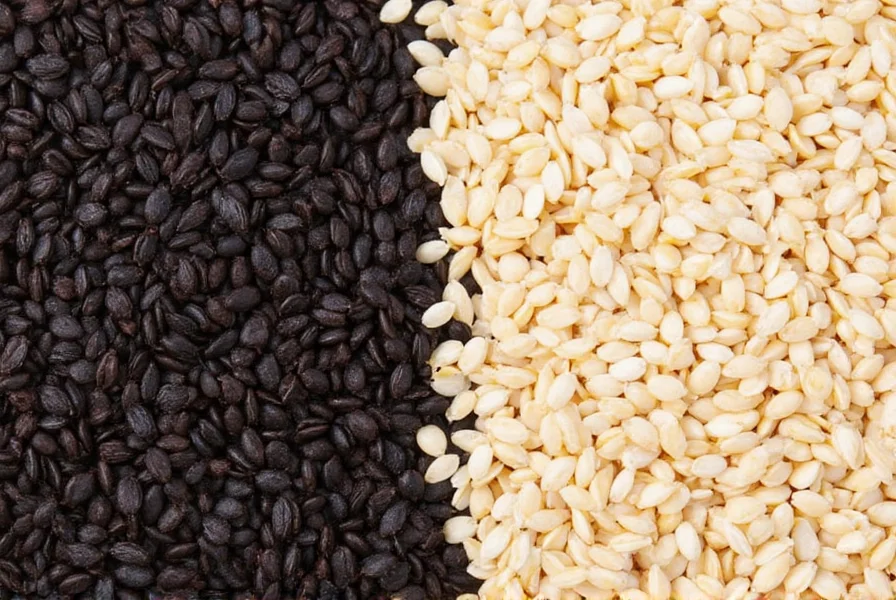
Recommended Products
Top-quality options for every use case:
- Organic Black Sesame Seeds (Brand X): Ideal for traditional Asian recipes and baking. Rich, nutty flavor with no additives.
- White Sesame Seeds (Brand Y): Perfect for desserts and delicate dishes. Smooth texture and consistent sweetness.
- Toast-and-Serve Sesame Mix (Brand Z): Balanced blend of black and white seeds for salads, rice bowls, and garnishes.
Frequently Asked Questions
Based on common inquiries about sesame seeds, here are answers to the most pressing questions:
Can I substitute black sesame seeds for white (or vice versa) in recipes?
Yes, but with flavor considerations. Black sesame has a stronger, earthier taste that works well in savory dishes or when you want pronounced nuttiness. White sesame is milder and better suited for delicate desserts. For balanced results, use a 1:1 ratio but expect color and flavor differences in the final dish.
Which type has more nutritional benefits—black or white sesame seeds?
Black sesame seeds contain slightly higher levels of antioxidants and calcium due to their intact hulls, while white sesame seeds (hull-removed) offer more bioavailable calcium. Both provide excellent protein and healthy fats. For maximum nutrition, include both varieties in your diet.
Do I need to toast both types before using them?
Toasting enhances flavor for both varieties, but it's especially recommended for white sesame seeds to develop their mild taste. Black sesame seeds can be used raw in pastes but gain complexity when toasted. Always toast in a dry pan over medium heat until fragrant (1-3 minutes).
Why do my sesame seeds taste bitter?
Bitterness usually results from over-toasting or rancidity. Black sesame naturally has subtle bitter notes that balance well in savory dishes. If unexpected bitterness occurs, check storage conditions—sesame seeds spoil faster than many spices due to their high oil content. Store in the refrigerator for longest freshness.
How long do sesame seeds stay fresh?
Unopened packages last 6-12 months in cool, dark pantries. Once opened, transfer to airtight containers—white sesame keeps 3-6 months at room temperature, while black sesame (higher oil content) lasts 2-4 months. For extended storage (up to 1 year), refrigerate or freeze both types.
Can I grind sesame seeds without special equipment?
Absolutely. For coarse texture, crush seeds with a mortar and pestle. For smooth pastes, soak seeds in water for 30 minutes, then blend with minimal liquid in a food processor. Traditional tahini uses toasted white sesame seeds blended with neutral oil until creamy.
Conclusion
Black and white sesame seeds are both valuable kitchen staples, each offering unique qualities. Black sesame brings depth to savory dishes, while white sesame shines in desserts and delicate recipes.
Mastering their differences—hull status, flavor profiles, and storage needs—allows you to harness their full potential. Whether you're making traditional Asian dishes or modern baked goods, choosing the right variety elevates your culinary creations.
Next time you shop for ingredients, remember: sesame seeds may be small, but their versatility and nutritional benefits make them indispensable for any cook.
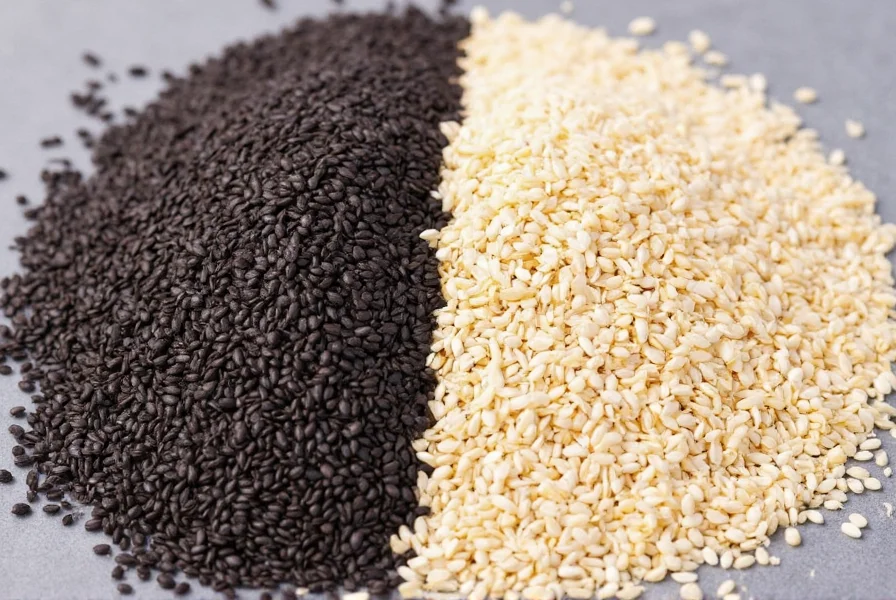

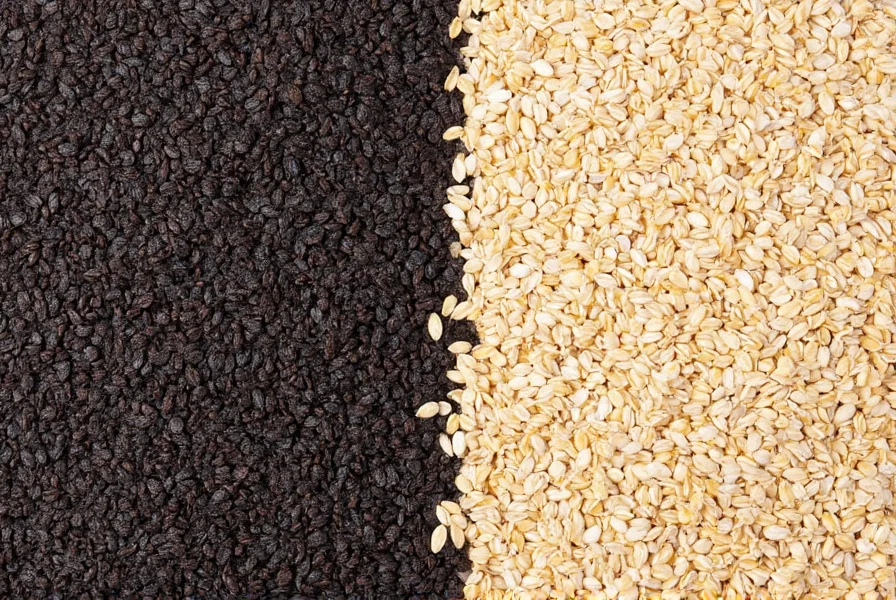









 浙公网安备
33010002000092号
浙公网安备
33010002000092号 浙B2-20120091-4
浙B2-20120091-4